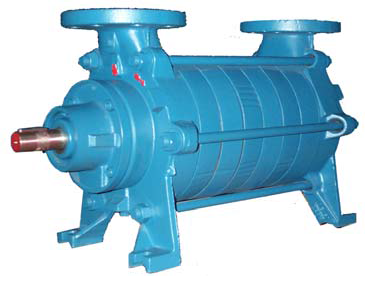The centrifugal vacuum pump is the most commonly used type of pump. In the centrifugal vacuum pump theory, fluid moves in response to created vacuum. Under normal operation, you would not notice anything out of the ordinary, but with cavitation, popping sounds occur. However, pump cavitation causes more problems than just a loud noise.

When it comes to cavitation of a centrifugal pump, there are two distinct types, including suction and discharge.
Suction Pump Cavitation
This type of cavitation occurs in high-vacuum or low-pressure conditions. In other words, the necessary amount of gas flow gets starved. As a result, bubbles (vapour) develop within the eye of the propeller. Once they move to the discharge side, conditions in the fluid change. As a result, compression of the bubbles into liquid occurs. With an implosion against the impeller’s surface, ‘cheese’ like holes develop and either large or small pieces of material go missing.
The most common causes of suction cavitation include operating pressure too close to service liquid vapour pressure, a blockage in the suction pipe, clogged strainers or filters, poor piping design, poor suction conditions, and the pump running too far to the right (high vacuum end) on the curve.
Discharge Pump Cavitation
For this type of cavitation, the discharge pressure of a centrifugal pump is excessively high. For instance, the pump’s Best Efficient Rate runs at 10 percent less. Due to a high discharge rate, instead of the fluid flowing out of the pump, it circulates inside. With the liquid flowing at high velocity between the pump housing and impeller, a vacuum in the wall of the house develops, which causes bubbles to form.
Again, significant shockwaves get triggered, causing a premature failure of the pump housing and impeller tips. However, in the most severe cases, the impeller shaft will break. Typically, discharge pump cavitation occurs for the same reasons as mentioned for suction cavitation with the exception that the pump runs too far to the left of the curve.
Superior Products
At PFS Pumps, we offer a broad range of state-of-the-art pumps and related equipment. For information about our company and to view our available products, please visit us online. For personalized service, please call to speak with a company representative.
